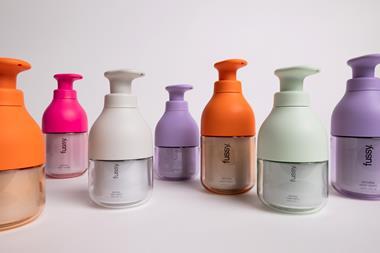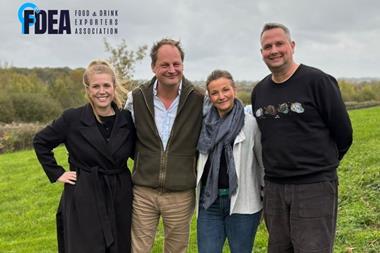Countlines are struggling with a 7% value slump, but some consolation for the huge confectionery market is found in the growth of bagged and boxed lines. Mary Carmichael reports
It takes a lot to tempt the British public away from the confectionery counter but rival impulse categories such as soft drinks, savoury snacks and phone cards have been doing their best during the past decade. The onslaught has taken its toll and all sides of the industry agree that confectionery's overall performance is, at best, flat and at worst with the 7% decline in the value of countlines giving cause for concern.
Even under attack, however, the market is still huge at £3.6bn and showing positive signs. Sugar confectionery is more than holding its own, and gum shows 1% growth. Sharing formats in all sectors are doing well, with bagged lines up 7% and boxed confectionery up 3%.
According to Mark Watson, sales director for specialist confectionery wholesaler Hancocks, this is benefiting established brands. "The trends in boxed chocolates are towards twist wraps, with some of the more traditional brands such as Kraft's Mini Orange Segments and Toblerone One by One doing especially well," he says.
Abigail Rogers, Kraft Foods category development manager for confectionery, says it's because we are growing more informal as a nation. "We've seen huge growth in sharing products in the last four years with all the major brands adopting bigger packs and wider-mouthed formats."
However, the rays of hope are of little consolation to the beleaguered, mainly chocolate, countline sector and, because the category is in the front line, it accounts for 30% of the market.
Chris Neal, category controller for confectionery at Booker, says activity in sugar confectionery is partly to blame for chocolate's slump. "Bagged formats, innovations, strong price points and new kids' products have all been detrimental to chocolate," he explains.But there is hope. Wholesalers and retailers have long demanded genuine innovation in chocolate and this year manufacturers appear to have have heeded the call.
Nestlé and Cadbury Trebor Bassett have brought out big guns in the form of white chocolate Dream and cream' chocolate Double Cream while others have dusted off stalwarts. Masterfoods revamped its flagship Mars giving it a lighter recipe, new packaging and new slogan.
Neal approves: "They realise that short-term limited editions are damaging their main brands." He singles out Dream and five-fingered Kit Kat, as newcomers which could emulate the success of last year's star newcomer Ferrero's Kinder Bueno which "went a long way towards underpinning the four-finger shortfall". He adds: "Bueno entered the vipers' pit of gutfill products with no particular direction and it achieved seventh position. That's phenomenal. Only Kit Kat Chunky has managed that impact."
Most of these newcomers aim to add value to the market, a move of which Graham Walker, Nestlé Rowntree sales communications manager, approves. "If there's one message I'd like to get across to the industry," he says, "it's that we must put value back into the market. We need to maintain price points and bring in genuine innovation. Putting too low a price tag on chocolate devalues it."Hancocks' Watson also applauds the arrival of newcomers that explore fresh territory and says he would add Double Cream and CTB's new Boost mental and physical energy variants Guarana and glucose to the list of possible stars.
According to Chris Morgan, CTB's customer relations director, the new Boost variants are designed to reclaim some of confectionery's lost market. "Chocolate products are usually created in response to an emotional need so most go down the indulgence and treat trail. These were developed with a physical need in mind and target the same young active audience as energy drinks, but at a much lower price point. Brands such as Red Bull have been poaching sales from confectionery for years. It's time to claim some back."
Marketing for Boost will include sponsorship of Jackass, Channel 4's late-night lads dare programme, which has a heavy male bias. This puts it into the same category as Nestlé's Yorkie with its latest strapline It's not for girls' as an antidote to the feminisation of other countlines. It may go some way towards pulling men back into the category. Dream and Double Cream have joined a host of big names marketing primarily to women, while revamped Mars' smaller size and lighter formulation is also more female-oriented.
While retailers have been crying out for genuine innovation in chocolate, activity on the sugar side has tended to be more towards consolidation and range extensions.
According to Booker's Neal, this is a good thing. "There have been no major outstanding sugar lines but Starburst brand extensions and Nestlé's Rowntree brand have performed well, and CTB's consolidation of its bagged range has proved successful.
"Brand rationalisation makes sense here, as there are already too many SKUs to display. Taking the helicopter view and stating we need to cull here' was the right move."
Other wholesalers express satisfaction with suppliers' performances, and Watson singles out CTB's service and promotions for special praise.
"They picked up 46% with us in the last period." he says.
{{FOCUS ON }}
Close menu
- Home
- Retail & Wholesale
-
Products & Suppliers
- Back to parent navigation item
- Products & Suppliers
-
Product Categories:
- Back to parent navigation item
- Product Categories:
- Alcoholic drinks
- Bakery
- Cereals & breakfast
- Cheese
- Chicken & poultry
- Chocolate
- Confectionery
- Crisps, nuts & snacks
- Dairy
- Fish
- Fresh produce
- Frozen
- Household
- Meat
- Own Label
- Sauces & condiments
- Seasonal
- Soft drinks
- Vaping
- Vegan & plant-based
- World foods
- Suppliers
- People
- Reports & Data
-
Topics A-Z
- Back to parent navigation item
- Topics A-Z
-
Popular topics:
- Back to parent navigation item
- Popular topics:
- Cost of living crisis
- Crime
- Deposit Return Schemes
- Finance
- Government & Regulation
- Health
- Inflation
- Loyalty
- Marketing
- Mergers & Acquisitions
- New Product Development
- Sourcing
- Supply chain
- Sustainability & environment
- Technology
- Ultra Processed Foods
- Vaping
- A-Z all topics
- Content by type:
- Events
- Ask iA (beta)
- Subscribe now
Sign in to comment on this article
Not logged in before? Register for FREE guest access today.
You will be able to:
- Read more stories
- Receive daily newsletters
- Comment on stories
Advert













No comments yet